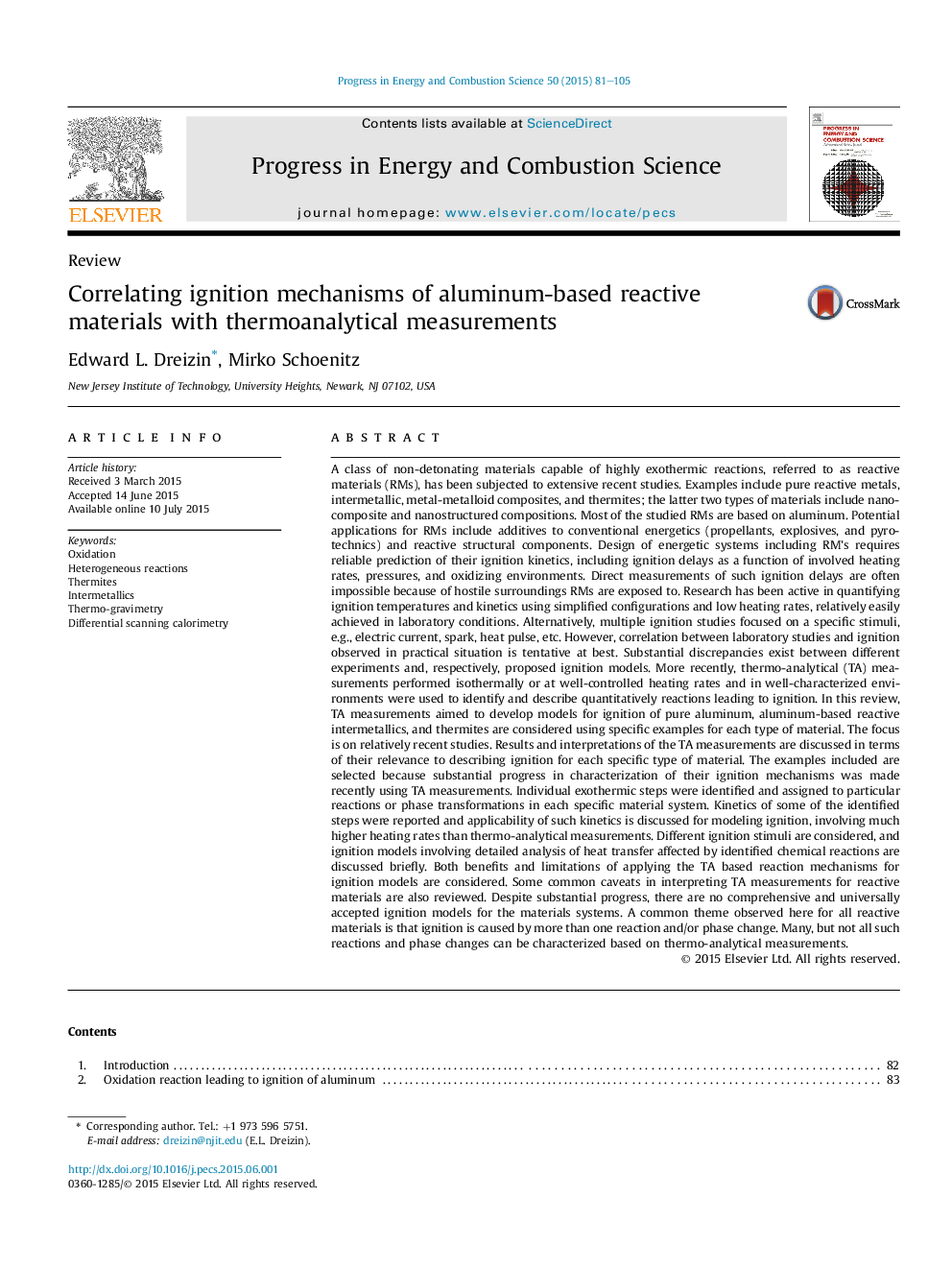| کد مقاله | کد نشریه | سال انتشار | مقاله انگلیسی | نسخه تمام متن |
|---|---|---|---|---|
| 241631 | 466294 | 2015 | 25 صفحه PDF | دانلود رایگان |
A class of non-detonating materials capable of highly exothermic reactions, referred to as reactive materials (RMs), has been subjected to extensive recent studies. Examples include pure reactive metals, intermetallic, metal-metalloid composites, and thermites; the latter two types of materials include nano-composite and nanostructured compositions. Most of the studied RMs are based on aluminum. Potential applications for RMs include additives to conventional energetics (propellants, explosives, and pyrotechnics) and reactive structural components. Design of energetic systems including RM's requires reliable prediction of their ignition kinetics, including ignition delays as a function of involved heating rates, pressures, and oxidizing environments. Direct measurements of such ignition delays are often impossible because of hostile surroundings RMs are exposed to. Research has been active in quantifying ignition temperatures and kinetics using simplified configurations and low heating rates, relatively easily achieved in laboratory conditions. Alternatively, multiple ignition studies focused on a specific stimuli, e.g., electric current, spark, heat pulse, etc. However, correlation between laboratory studies and ignition observed in practical situation is tentative at best. Substantial discrepancies exist between different experiments and, respectively, proposed ignition models. More recently, thermo-analytical (TA) measurements performed isothermally or at well-controlled heating rates and in well-characterized environments were used to identify and describe quantitatively reactions leading to ignition. In this review, TA measurements aimed to develop models for ignition of pure aluminum, aluminum-based reactive intermetallics, and thermites are considered using specific examples for each type of material. The focus is on relatively recent studies. Results and interpretations of the TA measurements are discussed in terms of their relevance to describing ignition for each specific type of material. The examples included are selected because substantial progress in characterization of their ignition mechanisms was made recently using TA measurements. Individual exothermic steps were identified and assigned to particular reactions or phase transformations in each specific material system. Kinetics of some of the identified steps were reported and applicability of such kinetics is discussed for modeling ignition, involving much higher heating rates than thermo-analytical measurements. Different ignition stimuli are considered, and ignition models involving detailed analysis of heat transfer affected by identified chemical reactions are discussed briefly. Both benefits and limitations of applying the TA based reaction mechanisms for ignition models are considered. Some common caveats in interpreting TA measurements for reactive materials are also reviewed. Despite substantial progress, there are no comprehensive and universally accepted ignition models for the materials systems. A common theme observed here for all reactive materials is that ignition is caused by more than one reaction and/or phase change. Many, but not all such reactions and phase changes can be characterized based on thermo-analytical measurements.
Journal: Progress in Energy and Combustion Science - Volume 50, October 2015, Pages 81–105
